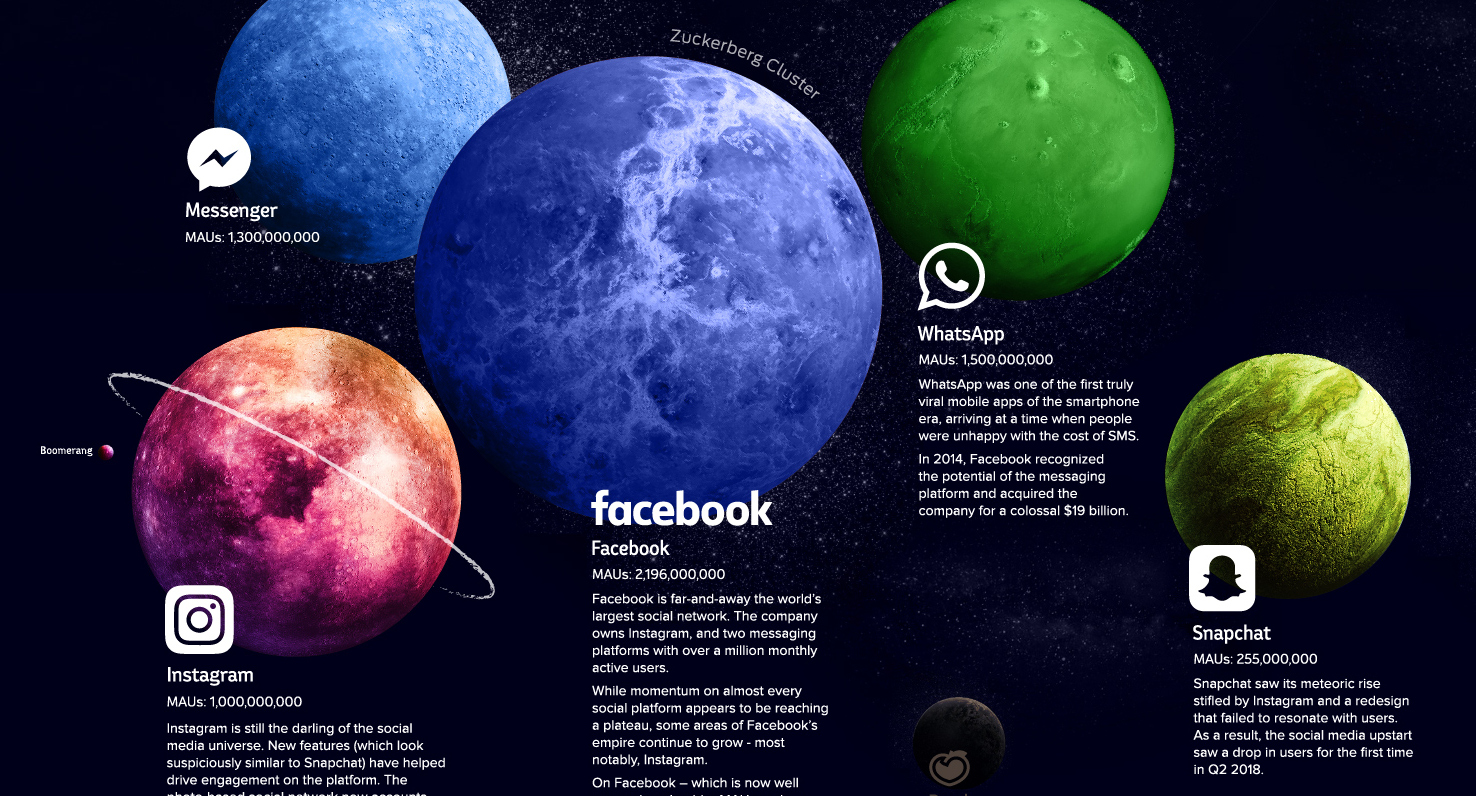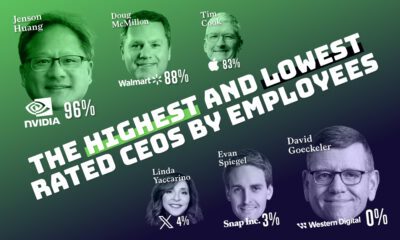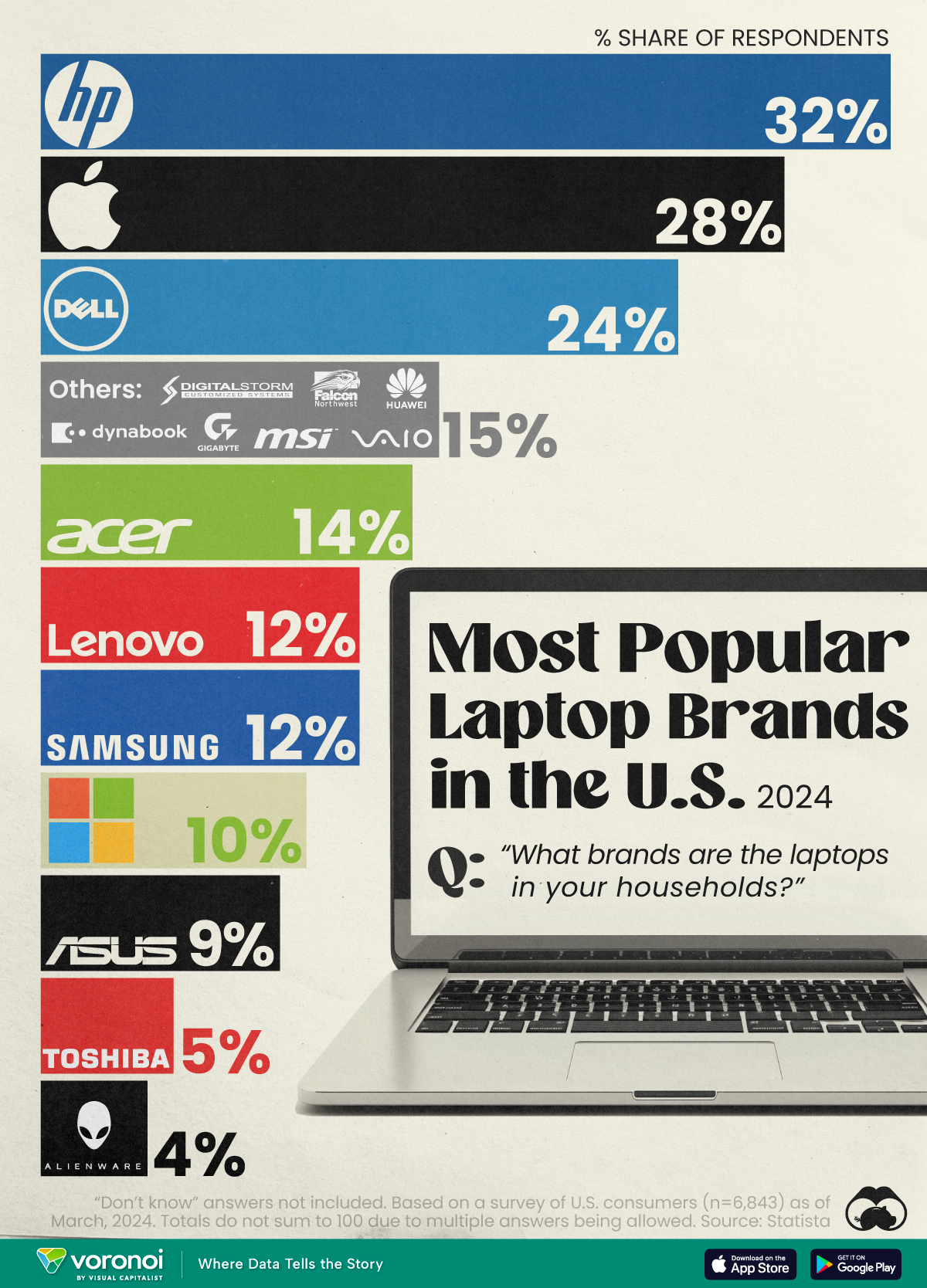Technology
Visualizing the Social Media Universe in 2018
View a high resolution version of this graphic

The Social Media Universe: 2018
View the high resolution version of today’s graphic by clicking here.
Billions of people around the world grew up during the age of social media, and mankind is slowly marching toward a future where nearly everyone will be a digital native.
For the one-third of humanity that now uses a smartphone, messaging and status updates are often more natural than having a live conversation. In a world where social interactions are peppered with emojis and funneled through a front-facing camera, the platforms we use become more than mere service providers; they are the connective tissue of our society.
What services are people using to communicate?
Monthly active users (MAUs) is a metric commonly used to evaluate how many people are using a service regularly. Here are the world’s top social and messaging platforms by MAUs:
| Rank | Social Network | Monthly Active Users (MAUs) |
|---|---|---|
| #1 | 2.2 billion | |
| #2 | YouTube | 1.9 billion |
| #3 | 1.5 billion | |
| #4 | Messenger | 1.3 billion |
| #5 | 1.0 billion | |
| #6 | 1.0 billion | |
| #7 | 806 million | |
| #8 | Qzone | 563 million |
| #9 | Douyin | 500 million |
| #10 | 411 million | |
| #11 | 366 million | |
| #12 | 330 million | |
| #13 | Baidu Tieba | 300 million |
| #14 | 294 million | |
| #15 | Viber | 260 million |
| #16 | Snapchat | 255 million |
| #17 | Line | 203 million |
| #18 | Telegram | 200 million |
| #19 | 200 million | |
| #20 | YY | 117 million |
| #21 | VK | 97 million |
Let’s take a closer look at these massive platforms.
The Facebook Empire
On its own, Facebook is a behemoth, but adding in the other platforms run by Mark Zuckerberg paints a clear picture of who controls the social media in 2018.
During its growth spurt in the late aughts, Facebook emerged as the first truly global social networks, hitting one billion monthly active users and essentially popularizing the idea of social media. These days, Facebook appears to be hitting engagement and growth plateaus, but acquisitions such as Instagram and WhatsApp are fueling growth for the company, with the former accounting for over a third of revenue.
In China, WeChat isn’t just a typical messenger app.
This “super app” – which facilitates everything from point-of-sale purchases to accessing public services – is likely the template that other social platforms around the world will emulate as they strive for more thorough integration with their users’ lives.
Because WeChat is typically also used for work, the average user spends about an hour in-app each day. That is a level of engagement most platforms can only dream of.
The “Front Page of the Internet” has grown up.
The oft controversial message board – created in 2005 – is now worth an estimated $1.8 billion, and is contemplating an IPO in the near future. While the company does make money from advertising, a unique membership feature called Reddit Gold is helping bring in funding directly from the community.
When people have something to say publicly or look to debate big issues in the news cycle, more often than not, they use Twitter. Tweets from world leaders and CEOs can have far-reaching consequences, and hashtagged social movements have united more people than ever to affect change. For better or worse, Twitter fills an important role in modern society.
Unfortunately for Twitter, great responsibility has translated into greater scrutiny rather than strong revenue growth. The company has faced high profile controversies over harassment, bots, and fake news, and has struggled to match the sky-high growth expectations set when the “microblogging” platform went public in 2013. Twitter is still experimenting with new ways to monetize its 300+ million active user base.
SnapChat
In 2015, Snapchat, having already thoroughly conquered the under-18 market, looked set to disrupt the social media landscape. What came next was a tragedy in two acts.
First, Instagram released its Story feature that same year, effectively cloning Snapchat’s features and layout within their app. Many users, who had only recently began using novel new platform, flocked back to Instagram where they already had a developed following.
Secondly, a redesign of the Snapchat interface was widely criticized by high profile users, speeding up an exodus to Instagram.
Snapchat, which has since gone public, still has a quarter of billion MAUs, but questions remain about whether the platform can recapture the magic of their earlier years.
Technology
What Laptop Brands do Americans Use in 2024?
Statista surveyed nearly 7,000 American adults aged 18–64 asking them what laptop brands were in their households. These are the results.
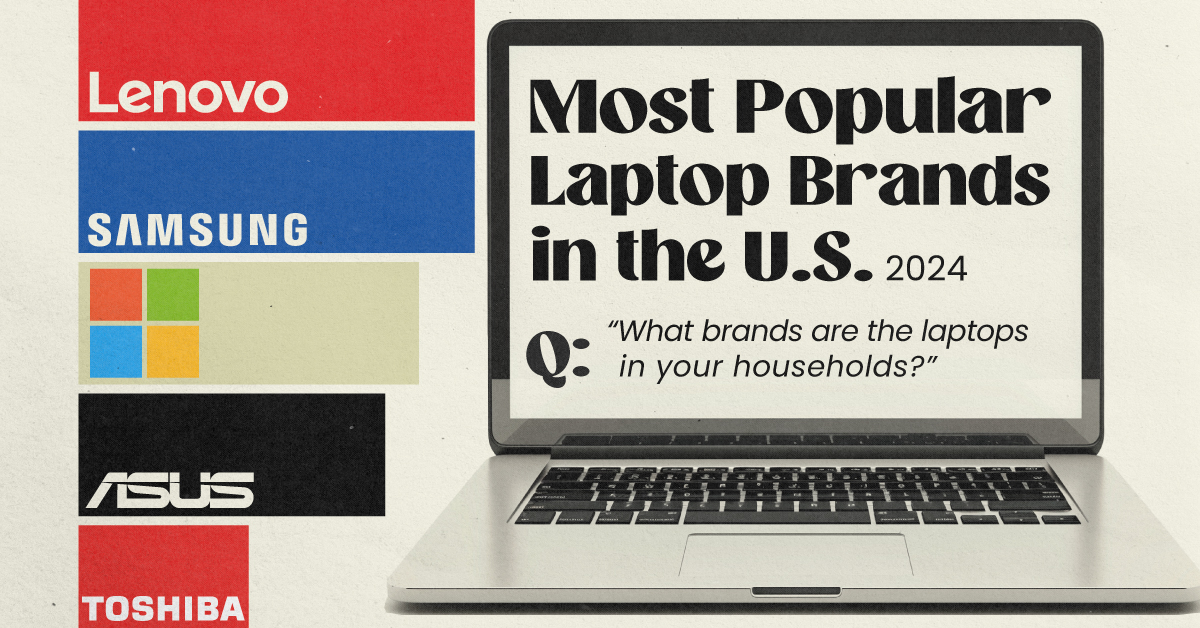
What Laptop Brands do Americans Use in 2024?
This was originally posted on our Voronoi app. Download the app for free on iOS or Android and discover incredible data-driven charts from a variety of trusted sources.
We chart the market share of commonly used laptop brands in the U.S., per Statista survey data. Multiple responses were allowed, and percentages do not sum to 100.
The U.S. Laptop Market Landscape
HP emerges as the preferred choice for laptops, present in 32% of surveyed households.
Meanwhile, Apple’s dominance in America’s smartphone segment isn’t quite matched in the laptop market with their Macbooks, trailing HP at 28% of households.
Here’s the full survey data.
| Brand | Share of Respondents |
|---|---|
| HP | 32% |
| Apple | 28% |
| Dell | 24% |
| Acer | 14% |
| Lenovo | 12% |
| Samsung | 12% |
| Microsoft | 10% |
| ASUS | 9% |
| Toshiba | 5% |
| Alienware | 4% |
| DigitalStorm | 2% |
| Falcon Northwest | 2% |
| Huawei | 2% |
| MSI | 2% |
| Vaio | 1% |
| Other | 6% |
| Don't know | 2% |
Note: DigitalStorm, Falcon Northwest, Huawei, MSI, and Vaio’s share of respondents were combined into the “Other” category in the graphic. “Don’t know” responses were not visualized.
Another well-known manufacturer, Dell, comes in at 24%, rounding out the top three by household share.
Other big laptop brands, Acer, Lenovo, Samsung, and Microsoft all range between 10–15% of surveyed households.
For a broader picture, market research firm, Technavio, predicts a 3.2% combined average growth rate for the global laptop market from 2024–28. A lion’s share of that growth (42%) is expected to come from North America. Rising popularity of gaming laptops will be a key tailwind.
Interestingly, thanks to their graphics processing units, gaming laptops are also in demand for AI/machine-learning work. Some companies have already started releasing models catering to this specific audience.
Learn More About Tech From Visual Capitalist
If you enjoyed this post, check out The Top 100 Most Valuable Brands in 2024 where technology companies make up nearly one-fifth of the list by themselves.
-
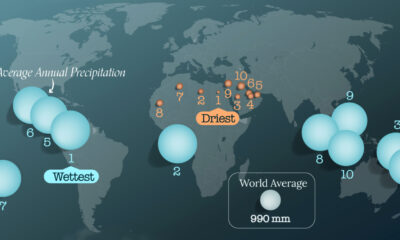
 Maps1 week ago
Maps1 week agoMapped: The World’s Wettest and Driest Countries
-
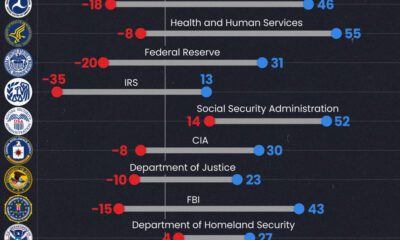
 Public Opinion2 weeks ago
Public Opinion2 weeks agoCharted: How Democrats and Republicans View Government Agencies
-

 Globalization2 weeks ago
Globalization2 weeks agoMapped: The Top Exports in Asian Countries
-
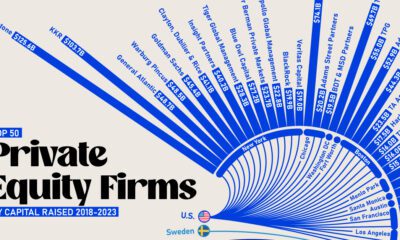
 Finance2 weeks ago
Finance2 weeks agoRanked: The World’s 50 Largest Private Equity Firms
-

 United States2 weeks ago
United States2 weeks agoMapped: The 10 U.S. States With the Lowest Real GDP Growth
-

 China2 weeks ago
China2 weeks agoComparing New and Current U.S. Tariffs on Chinese Imports
-

 Politics2 weeks ago
Politics2 weeks agoWhich Countries Have the Most Economic Influence in Southeast Asia?
-

 population2 weeks ago
population2 weeks agoThe Top 25 Nationalities of U.S. Immigrants


